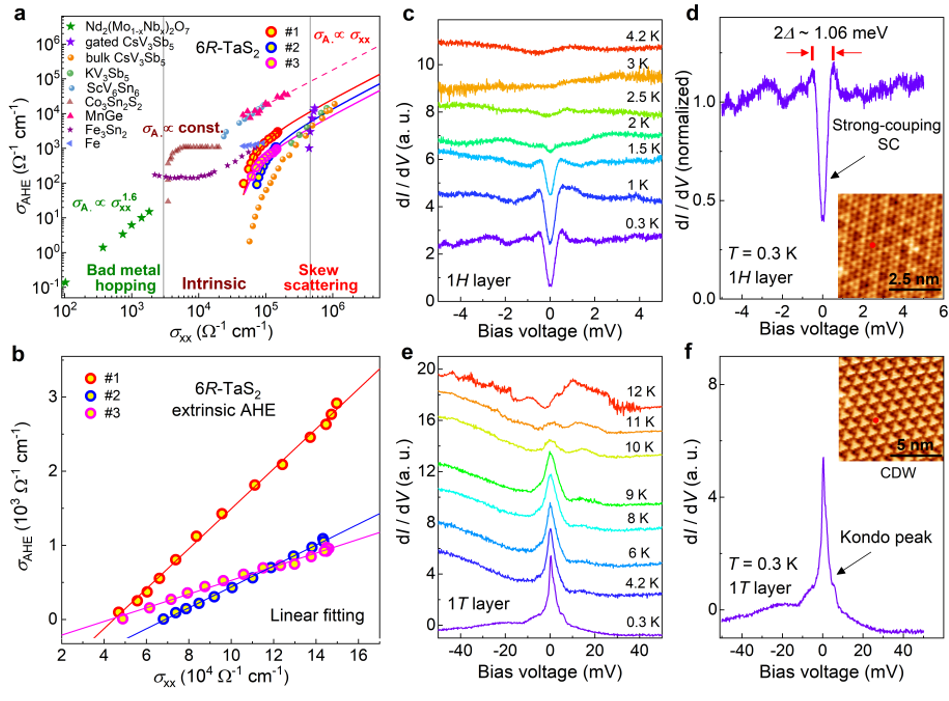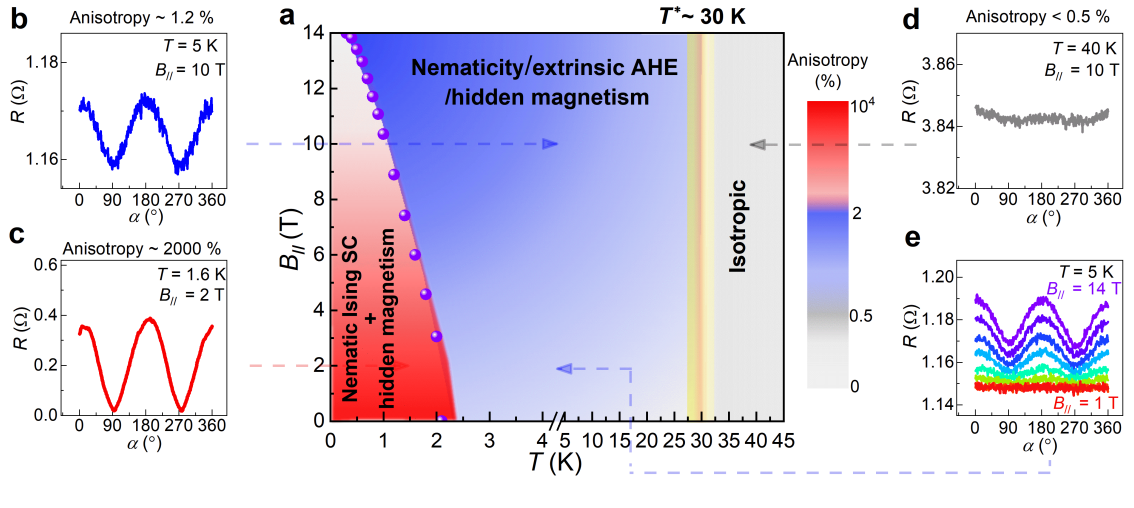Nematic Ising superconductivity with hidden magnetism in few-layer 6R-TaS2
2024/09/04
Strongly correlated electronic system is an important research field in the current physics community, due to the plenty of emergent novel quantum states resulting from the competition between correlation effects and quantum fluctuations. The correlation effect covers strong interactions between lattice, charge, spin, and orbital, playing a key role in high-temperature superconductivity, quantum spin liquids, heavy fermion systems, Ising superconductivity, Mott insulators, and other fields. It also has important application prospects in the field of quantum computing. Thoroughly studying the properties and behaviors of strongly correlated electronic systems, and achieving their construction and manipulation, is of great significance for the development of new quantum materials and the advancement of quantum technology.
Quantum spin liquid (QSL) is a special form of quantum matter proposed in 1973 by P W. Anderson, featuring by: 1) No spontaneous symmetry breaking at the zero temperature limit; 2) Having topological order, surpassing the traditional Landau paradigm; 3) Highly entangled quantum states with and novel anyon excitations have significant potential applications in quantum communication and quantum information processing, such as topological quantum computing. Ising superconductivity is a special type of superconductor, in which the spatial inversion symmetry breaking and strong spin orbit coupling cause the spin of Cooper pairs to polarize along the out of plane direction, resulting in a strong in-plane isotropic upper critical magnetic field. Professor K.T. Law from Department of Physics, Hong Kong University of Science and Technology has theoretically predicted that Ising superconductors could be used to create a new particle called "Majorana fermion". Therefore, the research on quantum spin liquids and Ising superconductivity has always been of great scientific interest.
In recent years, the development of low-dimensional heterostructures engineering and twist-electronics technology has completely changed and greatly promoted the research of quantum materials and condensed matter physics, and can even create new electronic ground states that do not exist in any single atomic layer. Theoretical and numerical studies have shown that the coupling of local spin and itinerant electrons in triangular-frustrated systems may result in chiral QSL (non-collinear chiral spin structure), and further Kondo coupling between chiral spin and itinerant electrons is expected to produce anomalous Hall effect. This non-collinear chiral spin structure may even generate weak intrinsic magnetism. Therefore, constructing quantum systems of QSL/Ising superconducting low-dimensional heterostructures (i.e. local spin/itinerant electron coupling) may lead to a wealth of novel correlated physical phenomena. The TaS2 family of transition metal dichalcogenides has different types of crystal structures, providing a great research platform. The space group of 2H-TaS2 is P63/mmc, and the single-layer 1H-TaS2 breaks the spatial inversion symmetry. The strong spin-orbital coupling leads to the Ising superconducting behavior of 1H-TaS2; The space group of 1H-TaS2 is P3m1, which is a triangular system. Patrick Lee's research shows that 1H-TaS2 is both a QSL candidate and a Mott insulator.
Recently, a research group led by Jian-Hao Chen, a researcher at the International Center for Quantum Materials at the School of Physics at Peking University, the Beijing Academy of Quantum Information Sciences, and the Key Laboratory for the Physics and Chemistry of Nanodevices of Peking University, constructed a low-dimensional quantum system of quantum spin liquid/Ising superconducting heterostructures. And they observed highly intertwined derived correlated physics in center-symmetry broken natural heterostructure 6R-TaS2 (stacking order: 1T-1H-1T-1H), including nematic order, Ising superconductivity, coherent Kondo resonance (Kondo lattice), huge screw-scattering anomalous Hall (anomalous Hall conductivity up to 3000 Ω-1cm-1, surpassing many magnetic materials), magnetic field-tunable thermal hysteresis, charge density wave, etc. So far, the physical mechanisms behind the singular correlated quantum states derived from QSL/Ising superconducting heterostructures still remain unresolved, and our experimental results will promote the progress of related theories. The related research results were published in the journal Nature Communications under the title "Nematic Ising superconductivity with hidden magnetism in few layer 6R-TaS2".

Figure 1, Few-layer 6R-TaS2: Natural van der Waals heterostructure, quantum spin liquid candidate/Mott insulator, nematic Ising superconductivity.

Figure 2, Hidden magnetism in 6R-TaS2: Coexistence of giant extrinsic anomalous Hall effect (screw-scattering mechanism), strong coupling superconductivity, and Kondo resonance.

Figure 3, Phase diagram of nematicity, hidden magnetism and Ising superconductivity in 6R-TaS2.
Paper Link:https://doi.org/10.1038/s41467-024-51631-z
 中文
中文 Email
Email QCloud
QCloud Log in
Log in
